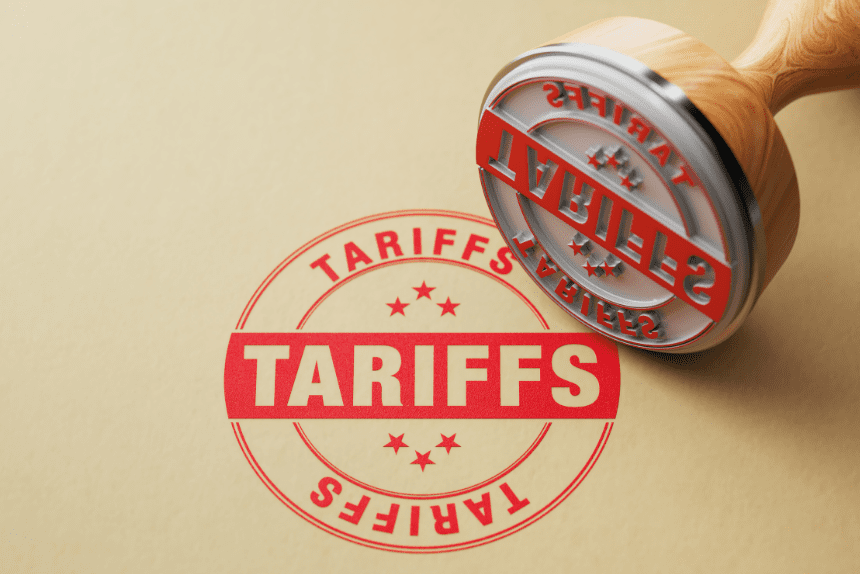Donald Trump has already made it clear what his trade goals are since he took office again. On April 2, which is now known as “Liberation Day” by his administration, Trump announced a series of harsh Trump tariffs 2025 policy actions. These tariffs on imports are called “reciprocal” because they are meant to be the same as or higher than the ones that American goods face when they are sold abroad.
- How much higher are tariffs now than they used to be?
- What does this mean for the US budget and borrowing?
- Is the trade deficit getting smaller like Trump wanted?
- What effect have the tariffs had on trade with China?
- What are other countries doing about the trade war?
- Are the tariffs making prices go up in the US?
- What does the future hold?
The effect was immediate. New duties were put in place on a wide range of goods, from heavy machinery and steel to electronics and consumer goods. These levies affected dozens of countries. Cars and steel, in particular, have been hit the hardest, causing problems in manufacturing around the world.
Some of these duties were put on hold because of diplomatic pushback, but selective cuts were made because of accords with countries like the UK, Vietnam, Japan, and the EU. Still, the overall result has been a rise in the average tariff rate, which is now at its highest level in almost a hundred years.
These tariffs hurt US imports, not foreign suppliers. Because of this, American firms and consumers are starting to feel the pinch.
How much higher are tariffs now than they used to be?
The Budget Lab at Yale University said that as of July 28, 2025, the average US tariff rate on goods coming into the country had risen to 18.2%, up from 2.4% in 2024. This is the highest level since the 1930s.
Thanks to the Trump tariffs 2025 program, tariffs brought in $28 billion in June alone, which is three twice the normal amount for the same month last year. That sudden influx of cash has given the Treasury a big, albeit controversial, boost.
The increase in tariffs has had an impact on more than just direct imports; it has also changed the costs of the supply chain, the way prices are set, and the strategy of businesses in many sectors. Small and medium-sized businesses have been disproportionately hurt because they frequently don’t have the money to swiftly adjust to the growing costs of goods and services. Read another article on Trump Florida Marijuana Ballot
What does this mean for the US budget and borrowing?
The Congressional Budget Office (CBO) says that the Trump tariffs 2025 program, which would raise tariff collections, may cut US government borrowing by $2.5 trillion during the ten years leading up to 2035.
But there is a trade-off. The CBO says that even though revenues have gone up, economic output will go down relative to a situation without tariffs. Also, the administration’s recent tax cuts are likely to take away a lot of the money that was earned, which raises concerns about the long-term health of the budget.
Some experts say that this way of doing things puts short-term political gains ahead of long-term economic reform. One economist remarked, “Tariffs can help businesses make more money, but they often hurt consumers and productivity.”
Is the trade deficit getting smaller like Trump wanted?
Trump has said many times that trade imbalances mean that other countries are taking advantage of the United States. The goal of the Trump tariffs 2025 strategy is to curb imports and get trading partners to let American goods into foreign markets.
At first, though, the reverse happened. As companies scrambled to bring in items before tariffs went into effect, the amount of imports rose sharply. In March 2025, the US trade imbalance hit an all-time high of $162 billion because of this stockpiling. By June, it had dropped to $86 billion.
Most economists agree that trade deficits are caused more by macroeconomic variables, like disparities in savings and investment, than by tariffs alone in the long run. A top policy advisor said, “The trade deficit is not just a trade issue; it’s a national accounting issue.”
What effect have the tariffs had on trade with China?
Trump has planned to put tariffs on imports from China. In 2025, tariffs on some Chinese goods went up to 145% at one time. They have now been cut to 30%, but the damage to trade between the two countries is still there.
In the first half of 2025, Chinese exports to the US were 11% lower than in the same period in 2024. China also changed the direction of its trade to other markets. Exports to India went up 14%, to the EU 7%, and to the UK 8%. China’s exports to ASEAN countries like Vietnam and Malaysia grew by 13%.
More and more people in Washington are starting to think that Chinese companies might be “tariff jumping,” which means they are sending goods through other nations to evade the Trump tariffs 2025 program. This happened before with solar panels during Trump’s first term.
What are other countries doing about the trade war?
Not all countries have raised their tariffs in response. Many have instead expanded the number of countries they trade with.
After three years of talks, the UK and India agreed to a free trade deal. Norway, Iceland, Switzerland, and Liechtenstein are all members of EFTA. They reached an agreement with Latin America’s Mercosur bloc. The EU is working on a trade deal with Indonesia, and Canada is doing the same with ASEAN countries.
China has changed as well. China used to get its soybeans from the US to feed its animals, but now it is getting them from Brazil. In June 2025, China bought 10.6 million tons of soybeans from Brazil, but only 1.6 million tons from the US.
These kinds of adjustments led the Trump government to give money to US farmers throughout his first term. If trade trends stay the same, we may need to do something like this again.
Are the tariffs making prices go up in the US?
For a long time, economists have said that tariffs will make prices go up. So far, the effect has been mild, partly because people stockpiled at the beginning of the year. But today it’s easier to see indicators of inflation.
The rate of inflation rose from 2.4% in May to 2.7% in June. The hike isn’t frighteningly huge, but it does show that consumers are under more pressure. Those for imported things like computers, appliances, toys, and books are going up faster than those for things made in the United States.
The Pricing Lab at Harvard University, which keeps track of real-time retail data, found that products touched by the Trump tariffs 2025 program are seeing bigger price hikes than those that aren’t.
What does the future hold?
In the near term, Trump’s tariffs on goods from 2025 have brought in more money for the government and led to new trade treaties. But a lot of economists are still worried about what will happen in the long run.
They say that long-term tariffs can hurt people’s buying power, make the economy less efficient, and cause other countries to take action. On the other hand, the US economy still has deeper structural problems that need to be fixed, such as too much spending and not enough saving.
Still, Trump’s trade policy has definitely changed the way goods move across the world and changed the way international trade works. The full effects of the policy won’t be obvious for a few months or years, as it’s still in its early stages.








